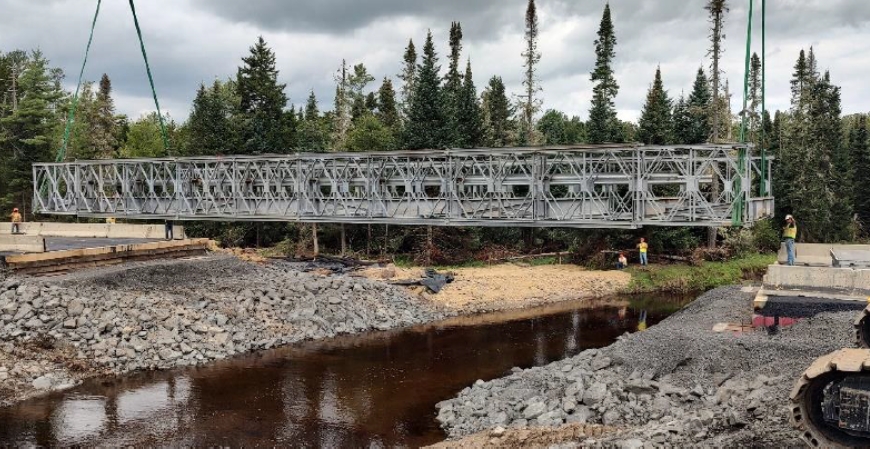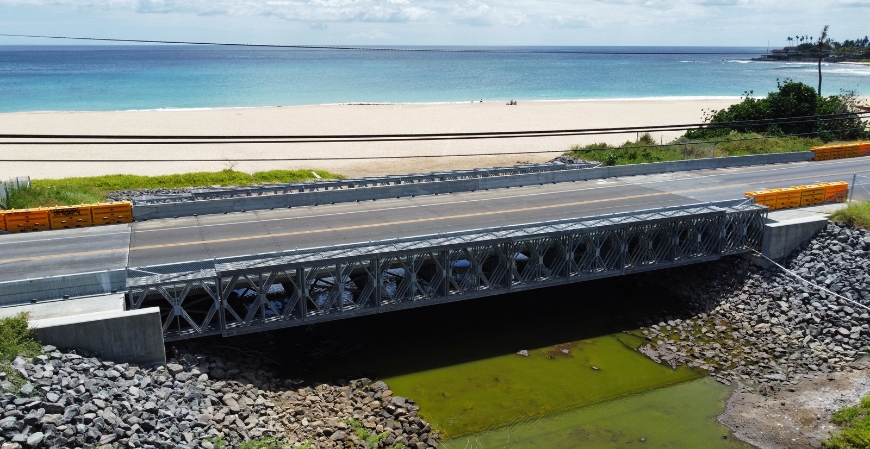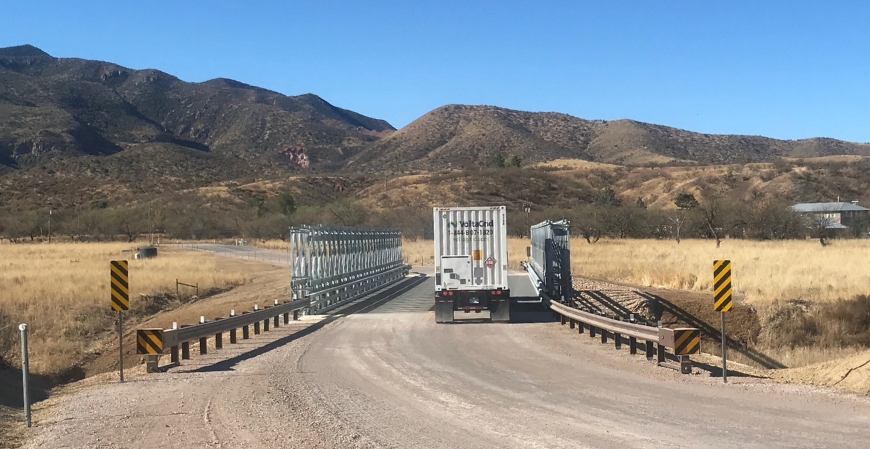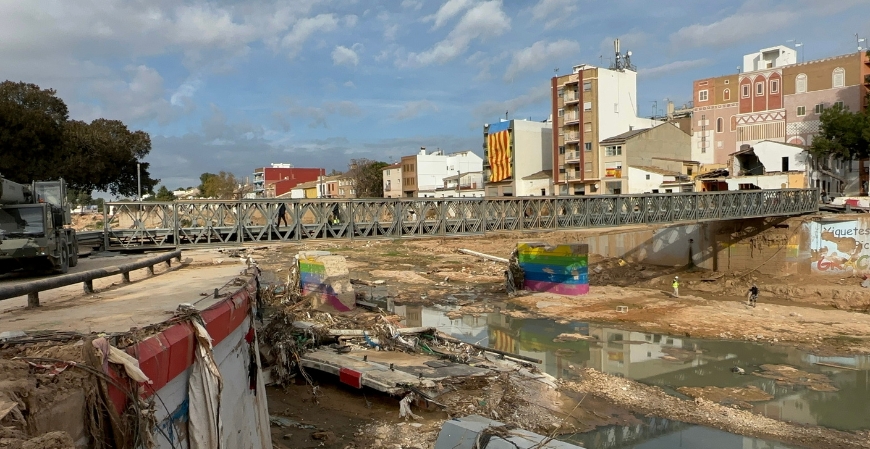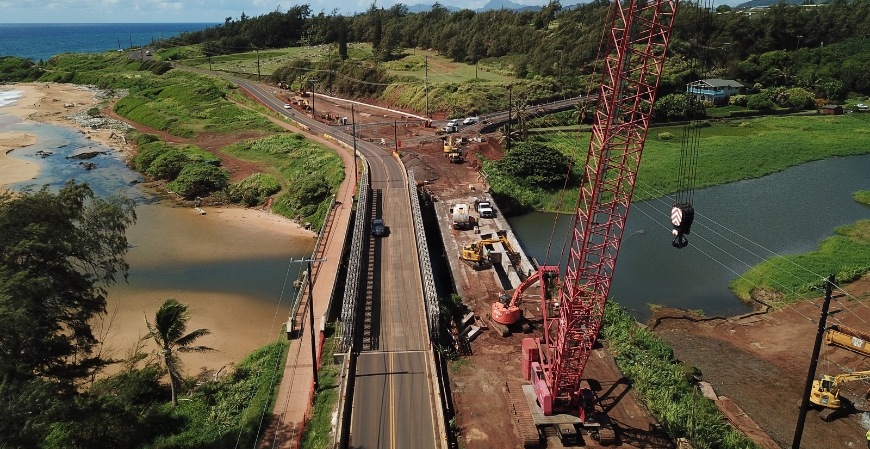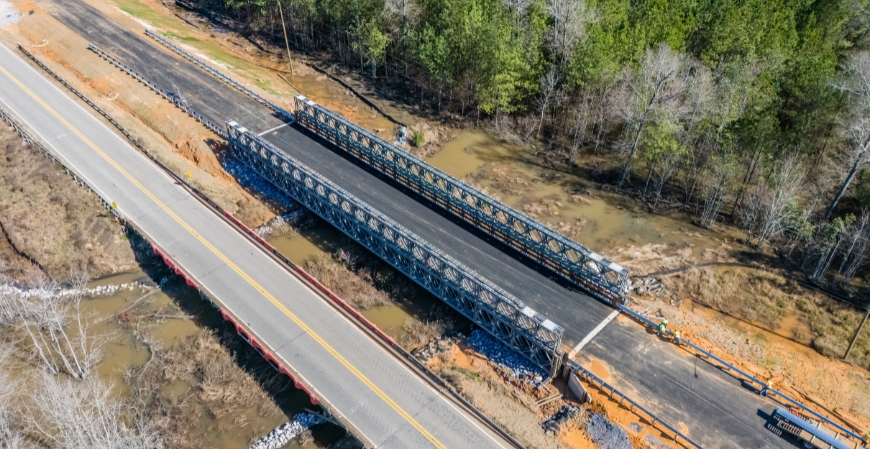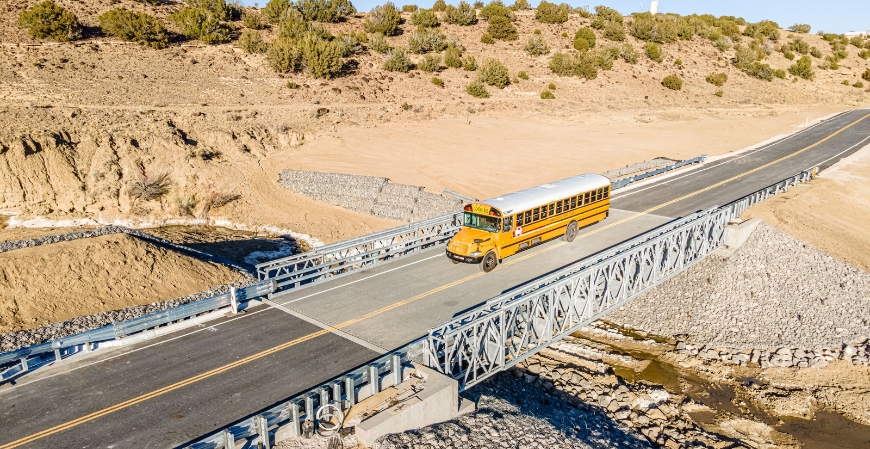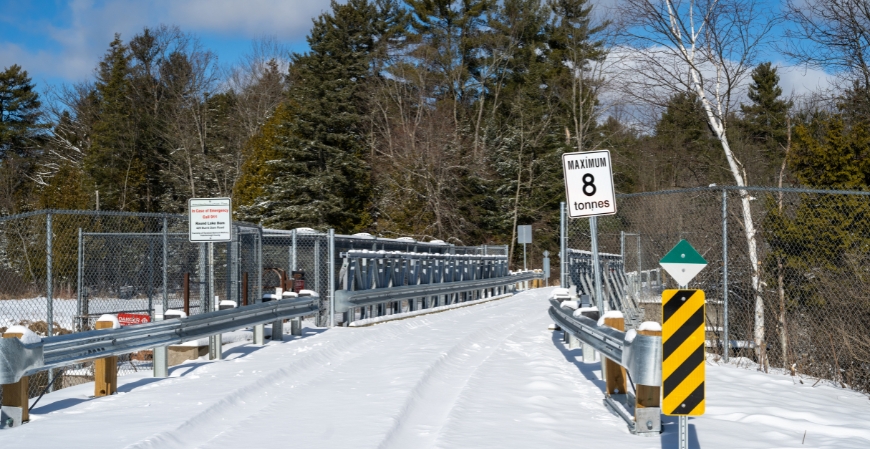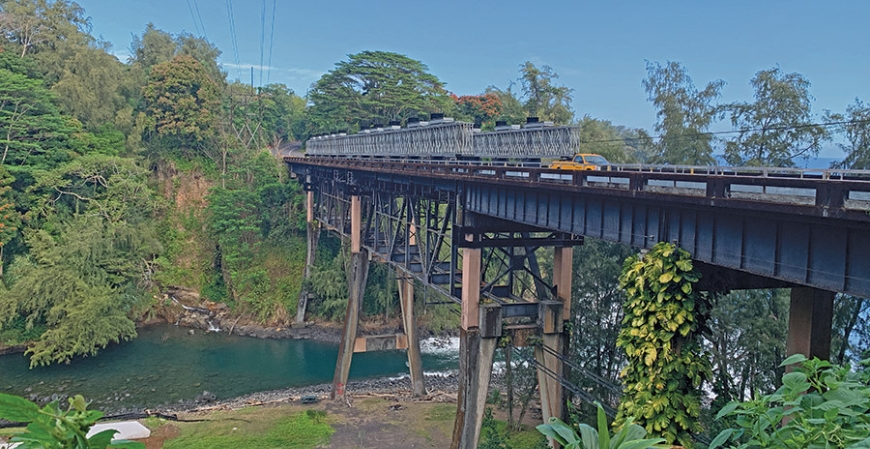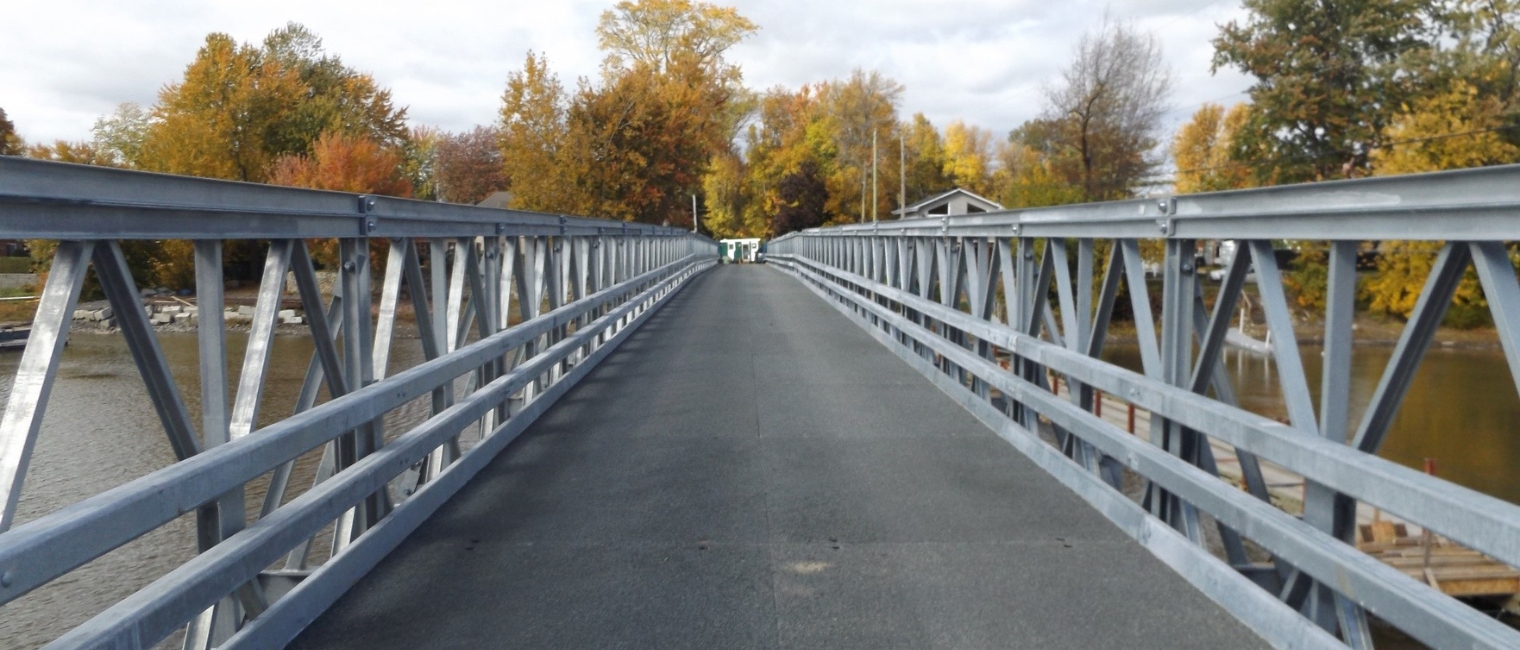
Permanent, cost-effective solution from Acrow replaces a failing bridge at Îles Corbeils
The bridge at Îles Corbeils, a suburb of Montreal on the north shore of the Rivière des Mille-Îles, was in very poor condition and pronounced beyond repair when a replacement project was initiated. The contractor removed the old structure, installed a temporary floating bridge and rehabilitated the existing three piers and abutments. But when the new bridge arrived on site, engineers observed severe non-conformity on the new structure and rejected the bridge. As a cost-effective and timely alternative, a structure from Acrow was ultimately purchased, in part because delivery and installation could be accomplished quickly.
But that is not to say that the job came without challenges. From the receipt of the purchase order, Acrow had only three weeks to create the engineering drawings and get the components for the bridge on site. The purchase order was received by Acrow on August 14, 2015 and shipping of the panel bridge began on September 9. The 99.1 meters (320 feet) long by 3.6 meters (9.8 feet) structure was completed by the end of September and opened to traffic in mid-October.
As with all Acrow structures, this bridge uses only the highest quality, high strength steel from mills that hold certification from the International Organization of Standardization (ISO) as does Acrow’s fabrication facility. Each component of every structure is hot-dipped galvanized, which provides a virtually maintenance-free life of 75 years or more in even the harshest environment. All Acrow bridges meet or exceed the most rigorous quality standards of the American Institute of Steel Construction and have been full-scale tested for load-carrying capability by multiple organizations.
“In addition to the speed of installation and cost-savings, Acrow’s panel bridges offer safety features, such as the epoxy aggregate deck surface used in this application,” said Benoit Forget, Acrow’s regional director for Québec/New Brunswick. “While modular panel bridges are sometimes viewed as temporary due to the fact they are often used as detours, in North America, they are increasingly being used as permanent solutions to complex bridging needs and offer an effective and economic alternative to other bridge types, while still meeting bridge code requirements for permanent bridges.”
